Have you ever thought about the magic of turning a tiny seed into a beautiful bonsai tree? It’s a journey that combines patience, care, and a bit of nature’s magic. Learning how to grow bonsai from seed opens up a world of creativity and connection to nature.
This guide will walk you through the essential steps, from selecting the right seeds to nurturing them into miniature trees. You’ll discover the secrets of seed selection, the importance of soil, and the techniques of stratification and scarification to kickstart growth.
Ready to go on this rewarding adventure? Growing bonsai from seed is not just about the end result, it’s about enjoying the process of growth and transformation. Let’s dive in and explore how you can create your own living art piece, one seed at a time.
- Related article: Guide to Growing Bonsai
6 Key Takeaways on How to Grow Bonsai From Seed
- Growing bonsai trees from seed is a slow but rewarding process that can take 5-10 years to mature.
- Buy bonsai seeds from reputable suppliers or collect local seeds adapted to your climate for better growth chances.
- Use a mix of inorganic materials for drainage and organic components for moisture in bonsai soil.
- Some seeds require cold stratification or scarification to break dormancy and promote germination.
- Sow seeds in a bonsai soil mix, ensuring they are planted at the correct depth and watered gently.
- Provide seeds with proper watering, sunlight, and fertilization, and transplant seedlings into individual pots when ready.
Steps for Growing Bonsai From Seed
From seed collection to caring for your bonsai’s growth, let’s go over each step in the process of growing your bonsai from seed.
Step 1: Get Bonsai Tree Seeds
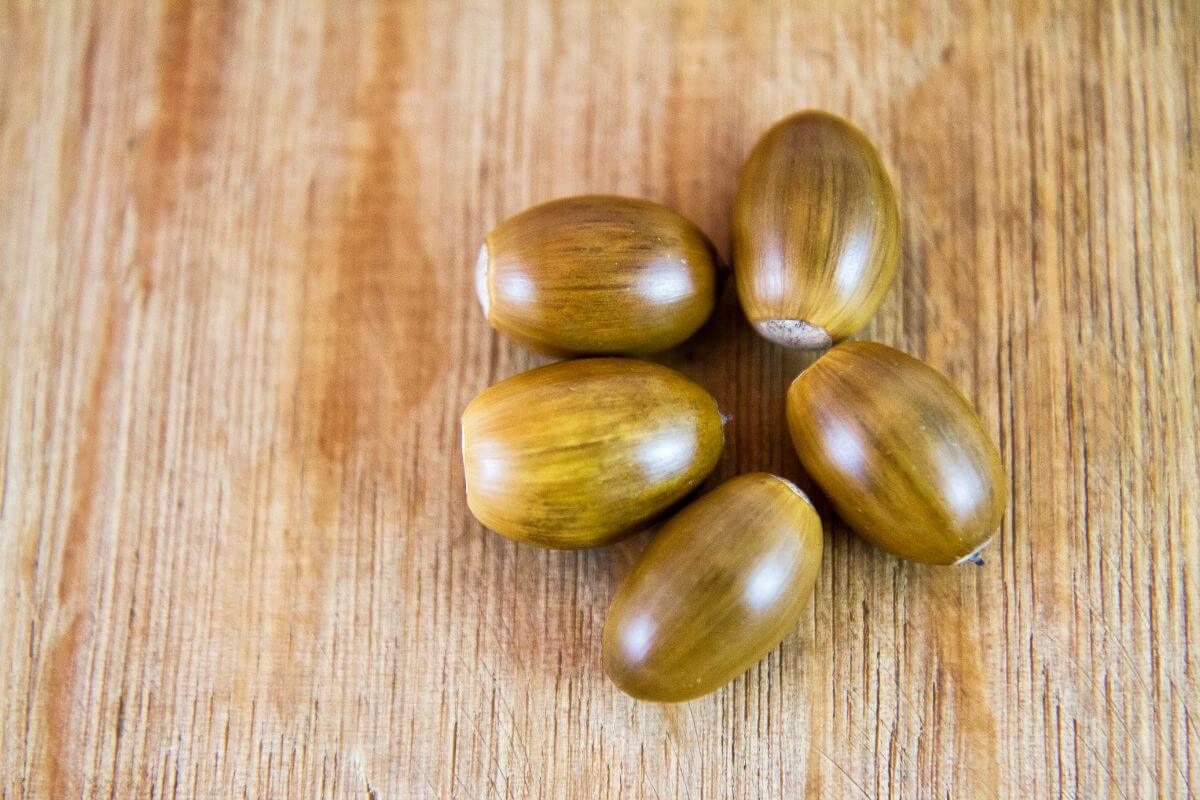
Growing bonsai starts with acquiring those tree seeds. While seeds won’t specifically label themselves for bonsai, you can find bonsai seed kits from specialized companies, which are ideal for beginners.
Where to Buy Bonsai Tree Seeds
When buying bonsai seeds, choose a reliable supplier. If local nurseries or garden centers don’t carry what you need, you can easily find seeds online. For a trusted option, check out this Amazon product I use for growing bonsai from seeds:
The internet offers a significant number of bonsai seed suppliers that will make high-quality tree seeds available for purchase. Search for websites that boast great reputations for reliability and have recommendations and good reviews from Bonsai experts and former clients.
Getting a variety of bonsai tree seed packs can also be a great gift. However, if you want an inexpensive way to acquire seeds, you can collect them.
Where to Collect Bonsai Seeds
The best approach is to collect seeds from normal trees in your local area. This ensures that the seeds are adapted to your climate, increasing their chances of thriving. Common sources include:
- Acorns from oak trees
- Chestnuts from chestnut trees
- Conifer Seeds found inside pine cones (collect pine cones and store them in a warm place to release the seeds)
For those new to bonsai, consider starting with seeds from species that are known to be more forgiving and easier to care for. Recommended varieties include:
- Japanese Maple
- Needle Juniper
- Chinese Elm
These species are generally more resilient and can tolerate common beginner mistakes.
The best time to collect seeds is during the autumn months when they naturally fall from trees. This timing aligns with nature’s cycle, allowing for optimal germination rate in spring.
After collecting seeds, you may need to prepare them for germination. Many seeds require a process called stratification, which simulates winter conditions. This can involve soaking seeds in water and then storing them in a refrigerator for some time (usually 1-3 months) to break dormancy.
Step 2: Bonsai Soil Choices and Preparation
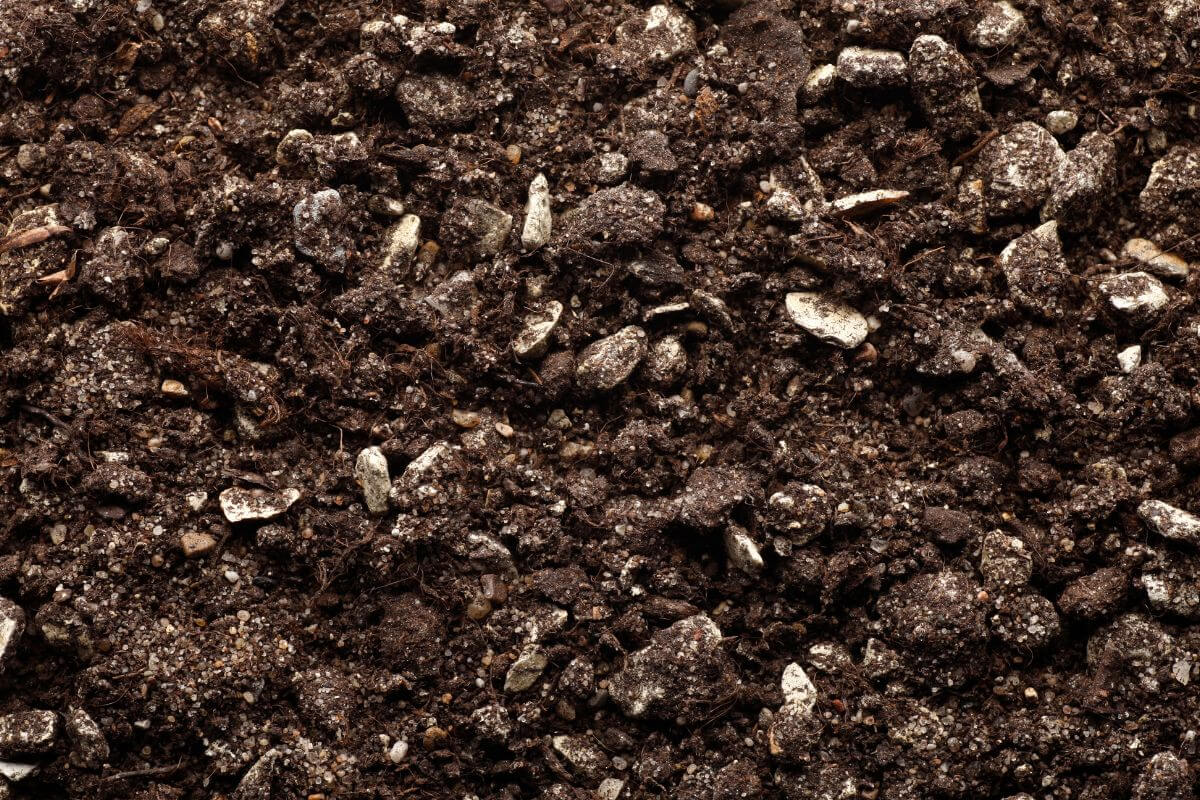
To keep bonsai trees in a healthy growth, the soil must provide excellent drainage to prevent root rot caused by waterlogged soil.
Use materials like lava rock, pumice, perlite, and akadama for good drainage. While drainage is important, the soil also needs to retain enough moisture, using components like pine bark and sphagnum moss.
Bonsai soil should offer essential nutrients, which can be supplied by small amounts of organic materials like compost or peat. Most bonsai trees prefer soil that is neutral to slightly acidic, with a pH range of 5 to 7.
For soil preparation:
- Start with a coarse layer at the bottom of the pot using larger particles like lava rock or pumice.
- Mix the soil components in a 75% inorganic to 25% organic ratio.
- Sterilize the soil mix by baking it at 180°F (82°C) for 30 minutes to eliminate pests and pathogens.
Consider the local climate when choosing soil components. In hot, dry areas, increase water retention materials. In cooler, wetter areas, emphasize drainage.
- Learn more: Quality Soil Mix for Bonsai
Step 3: Bonsai Seed Preparation and Germination
Regardless of whether you buy your seeds or collect them, they need proper care to sprout. If you live in a non-tropical region, you will have precisely defined seasons with seeds falling in the autumn months.
A period of dormancy follows through the winter to the spring. To germinate your seeds, you will need to mimic Mother Nature’s seasons as much as possible.
Temperate tree species like maple trees require cold stratification as it happens in nature before the seeds can germinate successfully.
Stratification Process for Bonsai Seeds
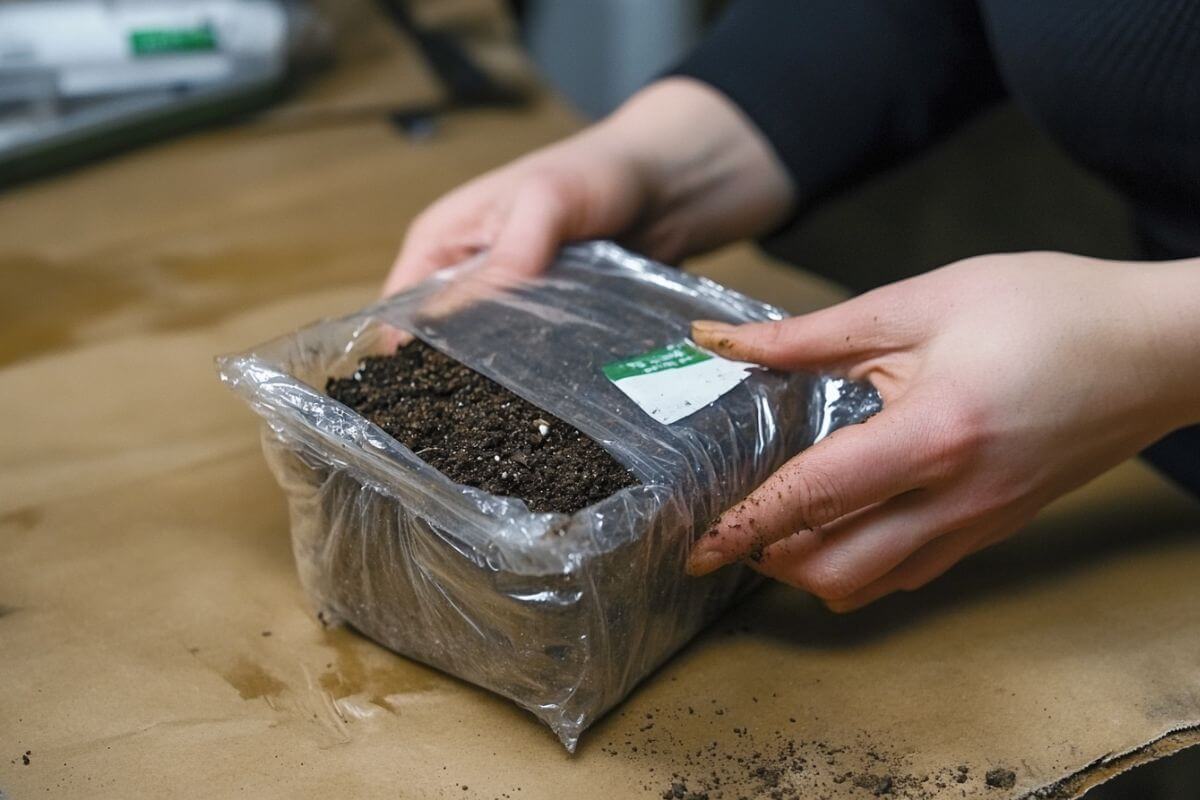
Many tree seeds are genetically formulated to survive cold winter climates. Then when spring arrives, they perceive the temperature change and begin sprouting into seedlings or germinating.
Seeds may not germinate if they do not perceive the temperature change. To prepare the seeds for cold and warm temperatures, a stratification process is used.
- Read more: How to Protect Bonsai From Winter Climate
Cold stratification is used when:
Cold stratification is used for seeds of many temperate tree species that naturally experience cold winters. These seeds are genetically programmed to require a period of cold to trigger germination in the spring. Common bonsai species that require cold stratification include:
- Japanese Maple
- Red Maple
- Pine species (e.g., Black Pine)
- Spruce Trees
- Chinese Elm
Cold Stratification Method for Bonsai Seeds
- Soaking Seeds – Start by soaking the seeds in water for 24-48 hours. This helps hydrate the seeds and prepares them for cold stratification.
- Preparing the Stratification Medium – Mix the seeds with a medium like sphagnum moss and charcoal in a 1:1 ratio. This mix helps retain moisture and prevents mold and bacteria growth.
- Storing Seeds – Place the seeds and the medium in a plastic container or zip-lock bag. Ensure the medium is lightly damp, not soaking wet, to prevent rot.
- Refrigeration – Store the container or bag in the refrigerator at 35°F to 41°F (2°C to 5°C). The stratification period varies by species but usually lasts 4 to 16 weeks. For instance, Black Pine seeds need 6 to 10 weeks.
- Monitoring – Check the seeds weekly to ensure they stay moist and have air circulation. Open the container briefly for fresh air and check for mold or germination. If seeds germinate, plant them immediately.
- Post-Stratification – After stratification, plant the seeds in a suitable bonsai soil mix. Keep the soil moist and at the right temperature to encourage germination.
Scarification Process for Bonsai Seeds
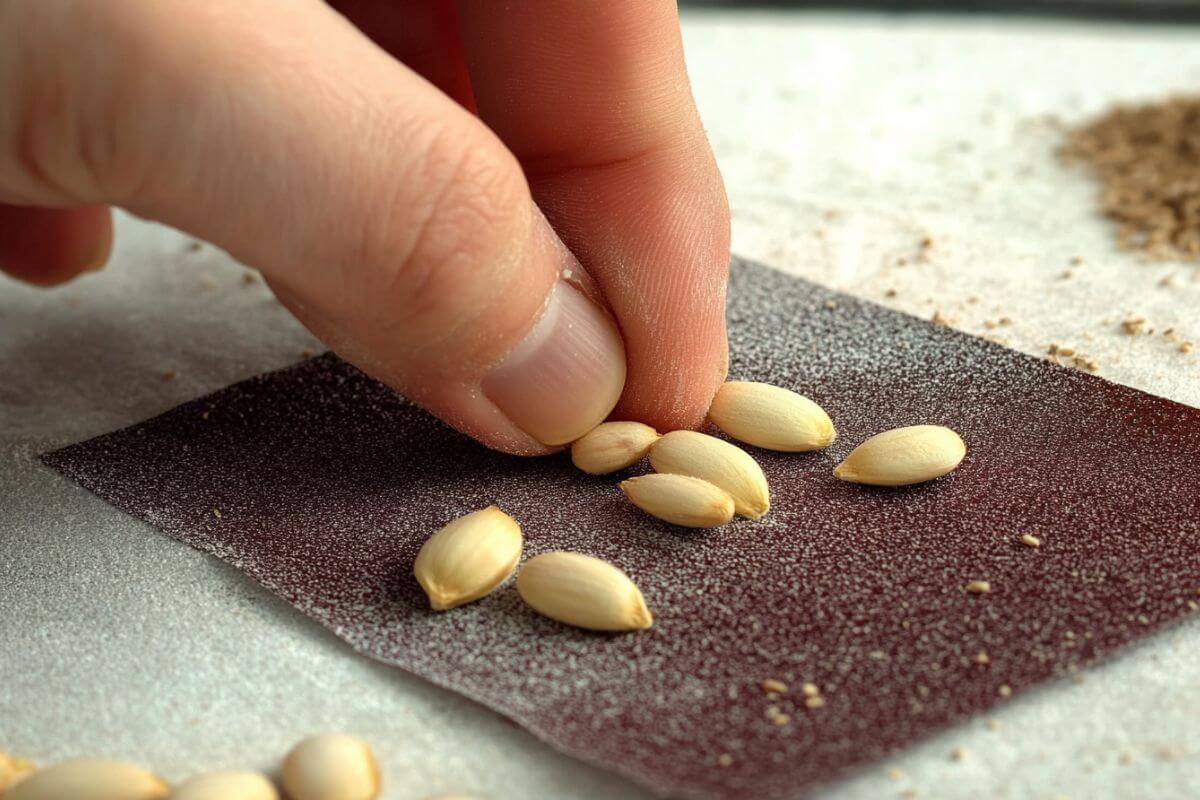
Scarification involves physically or chemically altering the seed coat to make it permeable to water and gases. This process is necessary for seeds that have a hard, impermeable outer shell, such as those of many tree species used in bonsai cultivation.
Here are the steps for the scarification method for bonsai tree seeds:
- Preparation – Soak seeds in warm water for 24-48 hours to soften the hard seed coat. Use a container to fully submerge the seeds.
- Monitoring – During soaking, viable seeds usually sink while non-viable ones float and can be discarded.
- Scratching or Sanding – For extremely hard seed coats, gently scratch with sandpaper or a file. Avoid damaging the inner seed.
- Nicking – Carefully make a small nick in the seed coat with a knife or nail clippers without harming the seed inside.
- Acid Treatment – In rare cases, treat seeds with a mild acid solution, such as sulfuric acid, to break down the seed coat. Use caution and follow safety measures.
- Hot Water Treatment – Pour boiling water over the seeds and let them soak until the water cools. Research this method for specific seed types.
- Rinse and Dry – Rinse the seeds thoroughly with clean water to remove debris or chemicals after scarification.
- Planting – Plant the scarified seeds in a suitable bonsai soil mix, ensuring they receive proper moisture and temperature conditions for germination.
In temperate climates, fall seeds will go dormant until spring; you can bury them outdoors during winter months. In warm climates, place seeds in a bag with dampened peat or vermiculite in the fridge until spring, removing them when they start to germinate.
Both scarification and stratification mimic natural conditions to encourage germination.
Bonsai Tree Seed Guide for Stratification and Scarification
Each species will have specific requirements for scarification and stratification.
Here’s an easy stratification and scarification guide for different bonsai tree species and their germination process:
| Bonsai Tree Seed Species | Stratification | Scarification | Planting |
| Japanese Maple | Warm for 120 days, followed by cold for 120 days | Within 48 hours in hot tap water | Sow seeds 3/8-inch deep |
| Japanese Larch | Cold for 30 days | Warm water for 24 hours | Sow seeds 1/8-inch deep |
| Japanese White Birch | Cold for 60 days | Warm water for 24 hours | Sow seeds ¼-inch deep |
| Japanese Hornbeam | Warm for 60 days then cold for 90 days | Warm water for 24 hours | Sow seeds 1/8-inch deep |
| Japanese White Pine | Warm for 60 days in peat moss | Warm water for 24 hours | Sow seeds 3/8-inch deep |
| Japanese Heavenly | Unnecessary | Warm water for 24 hours | Sow seeds 1/8-inch deep |
| Gray Bark Elm | Cold for 60 days | Warm water for 24 hours | Sow seeds ½-inch deep |
- Read more: Popular Bonsai Trees
Step 4: Plant the Bonsai Seeds
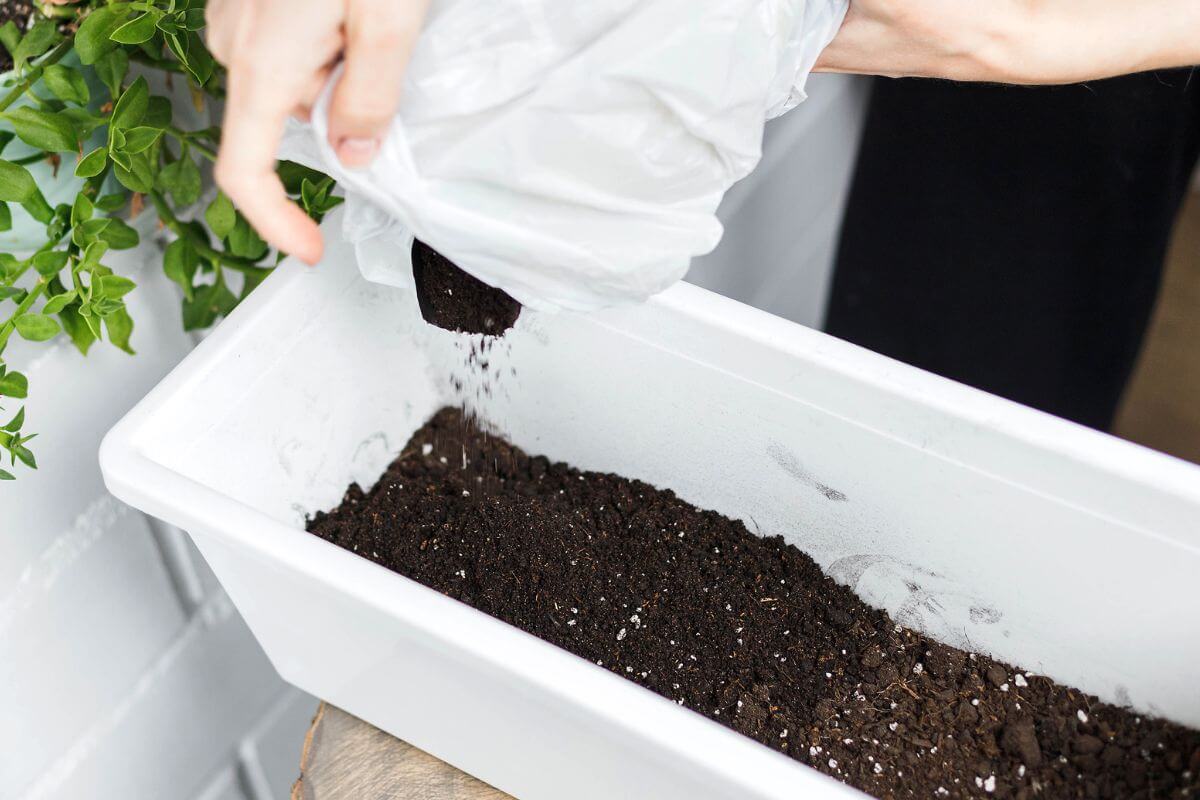
Follow these steps for planting bonsai seeds:
- Select a Pot – Choose a bonsai pot or a seed tray. If using a seed tray, you must transfer bonsai seedlings to a deeper pot once they sprout.
- Pot Size and Drainage – Avoid tiny containers to minimize repotting. Ensure the pot has sufficient drainage holes.
- Add Drainage Material – Place sand or gravel at the bottom of the pot for drainage.
- Add Soil – Fill the pot with a nutrient-rich bonsai potting mix, leaving about an inch from the top. Pat the soil gently to settle it without compacting.
- Create Seed Holes – Use your finger, a chopstick, or a similar tool to make shallow holes in the soil. Space the seeds apart to avoid overcrowding.
- Cover Seeds – Sprinkle a thin layer of bonsai soil mix, about ½ inch thick, over the seeds. Avoid planting too deep as it can inhibit germination.
- Water Carefully – Water gently to avoid disturbing the seeds. A spray bottle is effective for this.
- Position and Environment – Place the pot outdoors with minimal sunlight and good ventilation. Keep the soil moist but not excessively wet.
- Germination Timeline – Seeds should start germinating in early spring. If grown indoors, expect sprouts in about four weeks.
Step 5: Care for Bonsai Growth

Once the seeds have begun to sprout, you should use a lightly diluted bonsai fertilizer after approximately five to six weeks. At the end of one year, you can begin to separate your seedlings into individual pots.
The precise amount of time that seeds need to become seedlings will heavily depend on the species. Some will sprout in weeks, others will need months. Once they sprout real leaves, they can be placed in better containers, especially when cultivated in trays.
When you move your seedling, do not just pull it out of the soil bed. Use a pencil or chopstick. Place it underneath the seedlings’ roots and push upward. Once you have transplanted the tree into an individual pot, care for it like you would any bonsai tree of its species.
They will require, water, sunlight, and after five to six weeks, fertilization.
- Learn more: Bonsai Growth Timeline
Bonsai Care Tips and Basic Guidelines
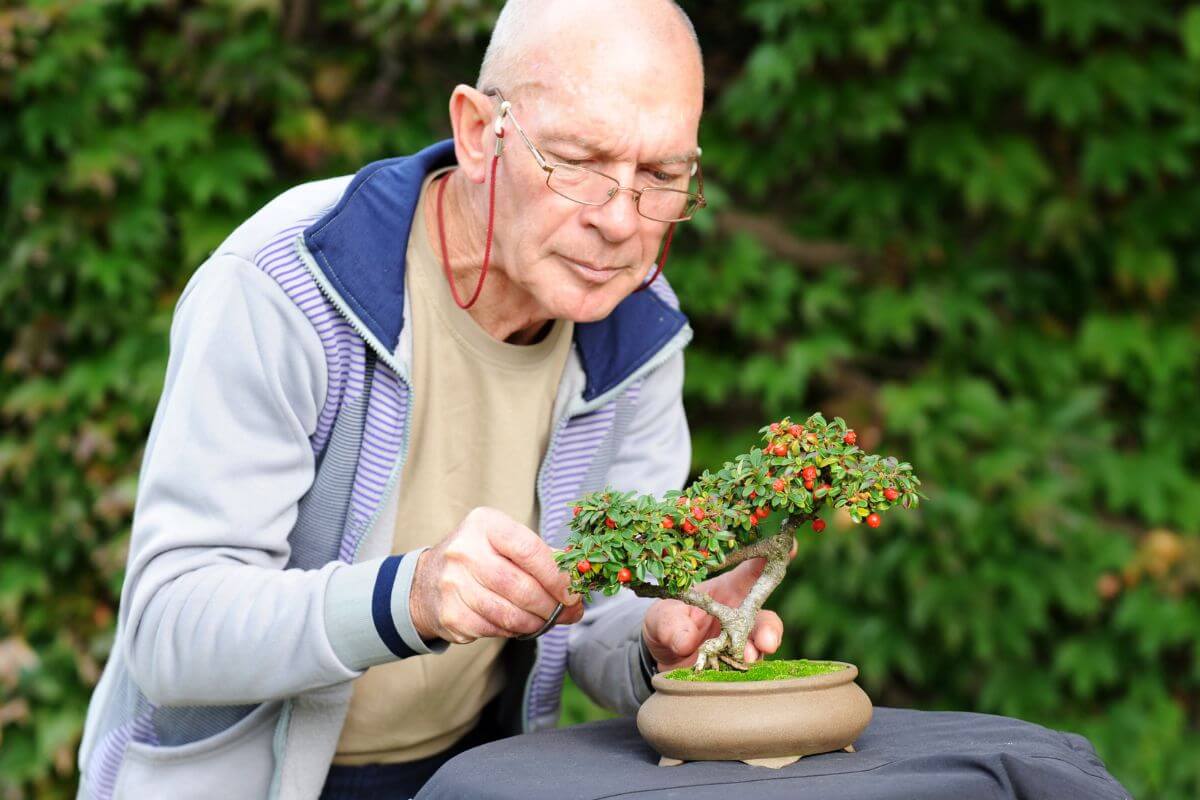
- Bonsai Seedlings should be placed in a semi-sunny area and watered as necessary.
- Tropical species should be cultivated indoors. Trees that are indigenous to your area can be cultivated outside for the sunlight.
- Water when the soil gets dry and use room temperature water. Avoid using cold water. If the soil bed is not kept moist, the tree is at risk of dying.
- Pruning encourages tree strength and growth. Branches, leaves, and buds require trimming. Get a good pair of bonsai scissors.
- Training with wires will control the shape and design of the tree.
Expect to invest approximately three years before the miniature trees are ready to be trained.
Is It Hard to Grow a Bonsai from Seed?
No, it is not hard to grow a bonsai from seed and it’s a labor of love that requires patience above all. The concept of cultivating a bonsai is to enjoy every step in its growth, training, and care. And should you fail the first time, try again. Bonsai is an art that needs time.
Nature genetically engineered tree seeds to thrive in their native environment and have been so for many generations. This is positive but can present challenges to the bonsai gardener, especially if you are cultivating a tree that is used to the cold.
These plants will go dormant and need this period of rest, or else they will fail to sprout. Their natural cold environment must be mimicked, and seeds need to go through a stratification or scarification series of techniques.
Germinating seeds through these preparatory processes of stratification and scarification is vital to success. These methods take their direct cue from Mother Nature’s knowing hand.
Grow Bonsai From Seed Final Thoughts
Growing bonsai from seed is a blast! It’s like watching a tiny miracle unfold right before your eyes. You’ll learn so much about these miniature marvels as you nurture them from day one. But hey, don’t expect instant results.
These little guys take their sweet time to grow into the stunning bonsai trees you’re dreaming of. Patience is key here. Trust me, the wait is worth it when you see your very own bonsai flourishing. Why not give it a try? You might surprise yourself with your green thumb!
Start with this bonsai tree seed starter kit that is popular and easy to find online.
Grow Bonsai From Seed FAQs
1. What Is the Average Time to Grow a Bonsai Tree From Seed?
Growing bonsai trees from seed is a slow process, typically taking 5-10 years to reach maturity. This extended timeframe allows the tree to develop properly and achieve the desired bonsai form.
2. Where Can I Buy Bonsai Tree Seeds?
You can purchase bonsai tree seeds from reputable suppliers, either online or at specialized nurseries and garden centers. Online searches for bonsai seed suppliers with good reviews can also yield quality options.
3. How Do I Prepare Bonsai Seeds for Germination?
Bonsai seeds may require stratification or scarification. Stratification involves simulating winter conditions, while scarification involves breaking the seed coat to promote germination. Each species may have specific requirements.
4. What Soil Is Best for Growing Bonsai Trees?
Bonsai soil should provide excellent drainage and retain moisture. Use a mix of inorganic materials (like lava rock or perlite) and organic components (like pine bark or sphagnum moss) to create a well-balanced soil mix.
5. How Should I Care for Bonsai Seedlings After Germination?
After germination, bonsai seedlings should be watered gently, provided with proper sunlight, and fertilized with a diluted bonsai fertilizer after 5-6 weeks. Transplant seedlings into individual pots as they grow.
For more articles on Bonsai, check these out:


